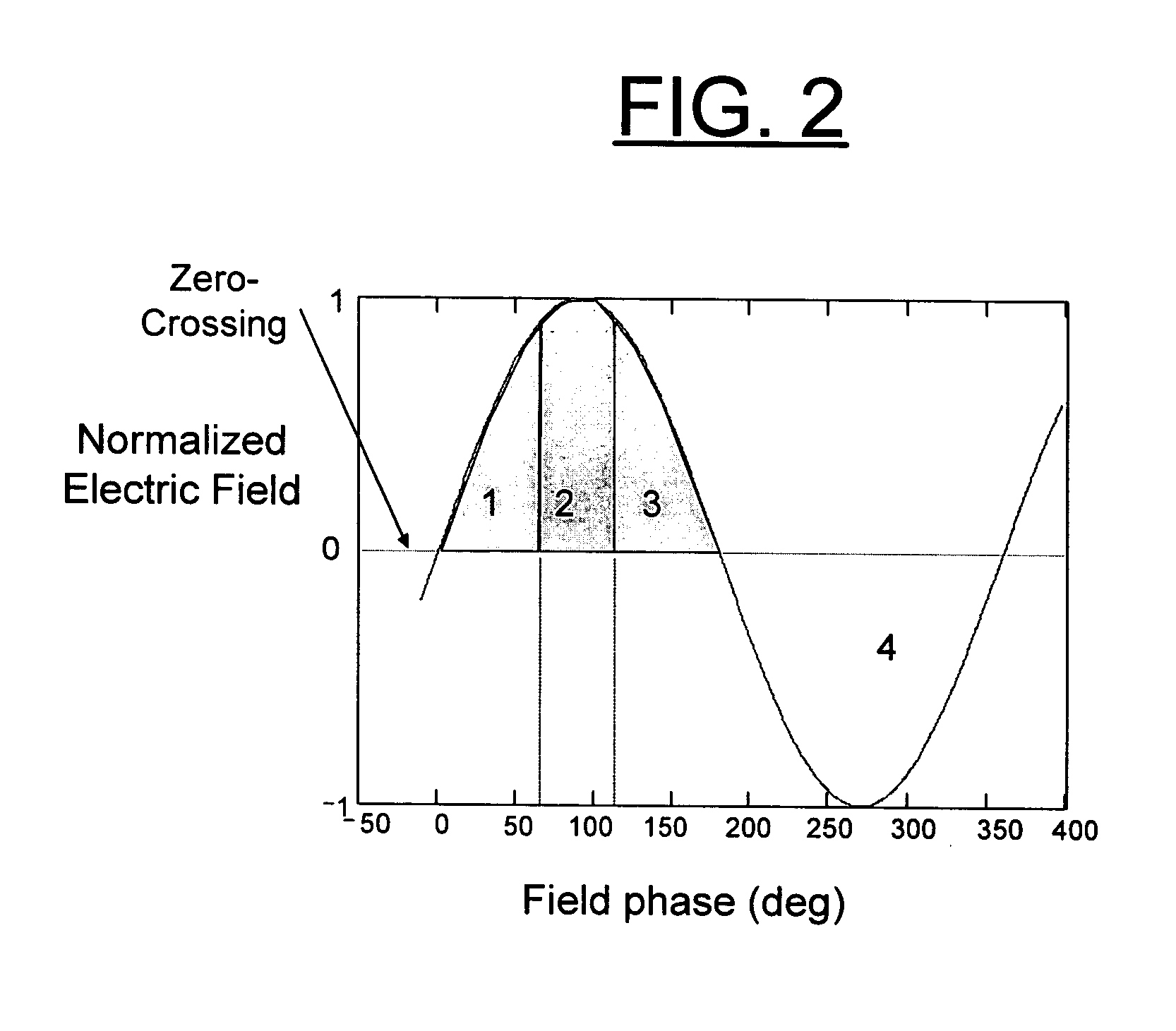Field emission cathode gating for RF electron guns and planar focusing cathodes
a cathode and electron gun technology, applied in the direction of klystrons, electron/ion guns in transit tubes, discharge tubes/lamp details, etc., can solve the problems of poor efficiency, thermionic cathodes are generally unsuitable for superconducting rf electron guns, and degrade beam quality, etc., to achieve high brightness electron beam production
- Summary
- Abstract
- Description
- Claims
- Application Information
AI Technical Summary
Benefits of technology
Problems solved by technology
Method used
Image
Examples
Embodiment Construction
[0031]In accordance with features of the invention, a general method for altering the emission time of a field-emitter cathode with respect to the RF period in the gun. This approach combines the advantages of the thermionic-cathode RF electron gun (beam produced every RF period, no laser needed) with those of a photoinjector (gated emission at the most desirable time, high brightness, superconducting RF-compatible). The resulting design enables broad applicability across a number of fields.
[0032]In accordance with features of the invention, a planar focusing cathode, also referred to as a standoff cathode, provides a means of focusing an electron beam emitted from the cathode of a high-brightness RF electron gun, without requiring the use of either magnetic fields, or a curved cathode surface. The application is for high-brightness electron guns in devices such as linear colliders, free-electron lasers, and the like.
[0033]Having reference now to the drawings, in FIG. 1 there is sho...
PUM
 Login to View More
Login to View More Abstract
Description
Claims
Application Information
 Login to View More
Login to View More - R&D
- Intellectual Property
- Life Sciences
- Materials
- Tech Scout
- Unparalleled Data Quality
- Higher Quality Content
- 60% Fewer Hallucinations
Browse by: Latest US Patents, China's latest patents, Technical Efficacy Thesaurus, Application Domain, Technology Topic, Popular Technical Reports.
© 2025 PatSnap. All rights reserved.Legal|Privacy policy|Modern Slavery Act Transparency Statement|Sitemap|About US| Contact US: help@patsnap.com



